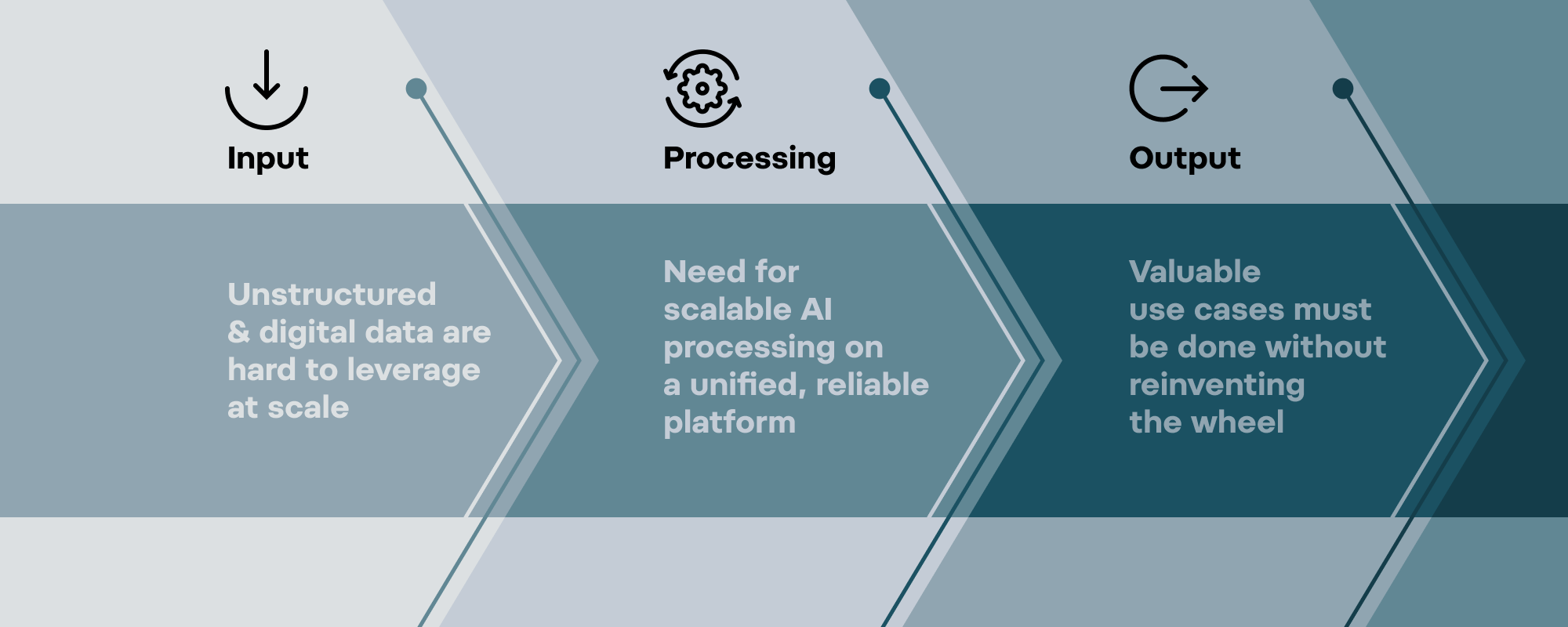Should you build or buy hyper-personalization solution?
Hyper-personalization allows you to create a unique customer experience — by treating all your customers with only highly curated content and products they will enjoy. Read why hyper-personalization is hot right now and whether to choose a ready-made solution or build your software in-house.
Many companies focus on building their internal data or artificial intelligence (AI) competency to gain data about their customers’ digital behavior — and leverage it smarter than their competition. Turning these data into actionable insights allows to create a truly personalized customer experience, better usability, or improved products and services.
The personalization concept isn’t ground-breaking. Treating customers individually has always been a way to attract them. Nonetheless, hyper-personalization refers to personalization in today’s digital world — as it uses advanced technologies to deliver personalized experiences. Research supports its significance:
- 90% of customers find personalized marketing appealing, and hyper-personalized marketing will soon become an essential part of any marketing strategy, shows this Deloitte report.
- 78% of people said personalized content made them more likely to repurchase from a brand, according to this McKinsey report (2021).

Why focus on hyper-personalization
Here’s what has changed:
- We’ve seen a massive shift to digital in recent years, also encouraged by the COVID-19 pandemic.
- Customers are using chats, e-mail or help desk apps much more. That generates additional human-written free text with important information for business, e.g., about people’s needs, wants, or sentiments.
- Understanding digital behavior is now essential — hyper-personalization is key to creating personalized and enjoyable customer experience online.
Extracting insights from digital and unstructured data is not so simple — data sets (e.g., from websites or phone calls) are of worse quality and usually gigantic (even in TBs). That said, natural language processing (NLP) and other AI techniques allow for extracting vast data sets and even unstructured data (such as customer service call recordings automatically transcripted by AI algorithms).
Advanced technologies are more accessible than ever and massively help to understand customers’ digital behavior. Cloud platforms (such as AWS, Azure or GCP) and data/AI technologies within these (like Databricks) make leveraging data sets much easier and cheaper.
Hyper-personalization leads to:
- Improved customer experience: Once you get insights, you can tailor your processes and products to customers’ specific needs and preferences. That allows upselling, cross-selling, or, e.g., better retention models.
- Increased efficiency: By understanding your customers, you target your marketing better — hence increase in efficiency and reduction of costs.
- Increased revenue by higher customer satisfaction and loyalty.
Buying and building software: pros and cons
You can either buy a ready-made solution or build it in-house. If you decide to start leveraging the new data for personalization, you might find yourself facing these two questions:
- Do we want to rely on our data experts and let them build everything from scratch? (either data/AI central teams or chapter/guild of your people within individual agile squads)
- Should we get software that fits our priorities, ongoing projects, processes, and workflow (such as hundreds of employees handling customer services via various channels)?
Let’s take a closer look at the pros and cons of buying and building software in-house.
Buying hyper-personalization software as a service (SaaS)
+ Ready-made solution — software updates included
+ High-cost efficiency in the long run
+ Support and training provided
+ If required, the vendor may provide access to an expert team
- Low customization
- Full dependency on the vendor — with support/issues/updates
- Legal rights (vendors’ right on the code)
- Possibility of lower employee satisfaction (data teams are put in competition with intelligent tools/made redundant and this can harm your organization in the long run)
Building software in-house
Working with digital and unstructured data in-house can be tricky if you are a large enterprise. High flexibility is required (iterative, agile approach to validate hypotheses and explore data), and IT dependency can slow down the project. On the bright side, it gives you full control over software development.
+ Total control over the software — its code and development can be customized to your business’s needs and you’re not dependent on any external product
- High initial investment
- Specialized experts and resources required
- Necessary staff engagement
- Likelihood of lower functionality
- Long time-to-market
Serve-Ware: When Service Meets Software
There’s also another way. Given the fact that Databricks became a new standard in data/AI solutions for the finance service industry (FSI), it enabled companies like DataSentics, an Atos company, to focus on developing reusable data products and solution accelerators = serve-ware, service meets software.
This reaps out only the pros from both buying software and building it in-house.
+ Fully tailored
+ No need to start from scratch
+ Quick PoC/pilot before making any significant investments
+ Quick time-to-market (as well as quick positive business impact)
+ Fast upskilling of your people to new technologies like
+ Databricks Possibility of managed services (especially ML/Data/DevOps)
+ Following sState of the art/best-market practices Lower business risk
+ Fully compliant with your existing architecture and frameworks (not duplicating or paying again for what you already have) by deploying it to your own Databricks-centric platform in AWS/Azure/GCP)

What‘s next?
If you are interested in the Brickbuilder hyper-personalization solution Persona 360 by DataSentics, an Atos company, feel free to schedule a walkthrough session.
Or get in touch directly with our leading FSI personalization expert David Vopelka to have your questions answered and chat about best practices.
About David Vopelka
FSI lead, AI & personalization expert
10+ years of leading marketing automation projects (banks, brokers, b2b); Intensely focused on customer data and understanding of customers behavior in every channel (omni channel); 3 years of experience in leading a digital marketing data-oriented team in the biggest CEE retail bank; 4 years of experience in the data-driven transformation of marketing of the biggest CEE retail bank; Public speaker at conferences (about machine learning and how to utilize it in digital advertising campaigns).

To watch the webinar on Hyper-personalization with David Vopelka nad Junta Nakai from Databricks click here.
 Search
Search



